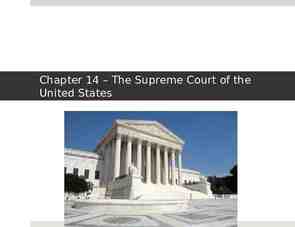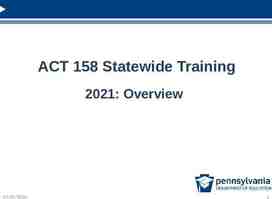Energy Efficiency and Intelligent Power Plants Rameshbabu R
15 Slides1.01 MB
Energy Efficiency and Intelligent Power Plants Rameshbabu R S 10th May, 2006 The Center For Bits And Atoms MIT
Honeywell International Inc Specialty Materials Aerospace Automation and Control Solutions Transportation and Power Systems Broad and Diverse Business, Technologies and Products File Number
Demand at i o n u b i r t s Di nc e O p ti m i z Generation m e D d te fo r m a Emission a M d n a E q u ip m e n tP e r t n e m e g na Context for Industrial Energy Efficiency Plant Performance Management File Number
Key Components of Intelligent Power plant Process monitoring and optimization Plant and Unit performances analysis Economical analysis of plant for optimization Schedule optimization Advanced control technologies Equipment health management File Number
Process Monitoring, Optimization & Mgmt Real-time Process data collection Real-time process statistics Real-time process monitoring Schematics visualization & analysis Reports Generation File Number
Performance Calculation & Analysis Plant Performance Unit Performance Mass and Energy Balance Boiler Turbine Feedwater Heater Condenser Cooling Tower Air Preheater Feedwater Pump Condensing Pump Circulating Pump Induced Draft Fans Force Draft Fans Primary Air Fans Combustion Turbine File Number
Economical analysis and optimal operation guidance Calculate and compare between the actually controllable parameters and expected parameters to obtaining the energy losses Analyze the reasons of deviation by expert system, and providing the operation direction Primary Controllable Losses - Main Steam Pressure - Main Steam Temperature - Reheat Steam Temperature - Carbon Content of Fly Ash - More Primary uncontrollable Losses - RH Pressure Loss - Fuel Thermal Value - HP Turbine Efficiency - More File Number
Optimal Operational Schedule Receive the instruction from EMS (Energy Management System), then distribute the load to each unit, meanwhile reduce the gross coal consumption and ensure safe, steady and economical running. Integrate the equal Incremental Rate and Neural Network arithmetic to predict the load variation. Consider all restricted conditions and running steadily, to ensure running safely and economically. Flexible running modes, and satisfy various conditions. E.g. Sootblowing - How to measure & monitor the cleanliness or fouling? - How to quantify the degree of contamination? - How to measure the change in heat transfer efficiency of the surface? File Number
Advanced Control Technology E.g. Advanced Combustion Control - To optimize the excess air in the - combustion process to decrease CO emission Calculate the best relationship between oxygen, air flow, coal supply, main steam flow and so on Online Performance Test - Boiler Performance Test - Turbine Performance Test - Condenser Performance Test - Air Preheater Leakage Test - Vacuum Leakage Test File Number
0 Typical Sol: Industrial Power Plant TLC MPC ELA-T ACC ELA-B Backpressure turbine(s) (w/extractions) ACC Steam Let-down Station(s) Condensing turbine(s) (w/extractions) ACC Several boilers operating to common steam header ACC – Advanced Combustion Control ELA-B – Economic Load Allocation for Boiler ELA-T – Economic Load Allocation for Turbine TLC – Tie Line Control MPC – Master Pressure Control File Number
1 Sample Optimization Benefits Scenario for Industrial Power: HPI/Chemical plant relying on steam delivery from in-house boiler unit Item Steam production capacity [t/h] Steam production costs [ /t] Plant Daily Production [ /day] Lost production on off-spec steam [ /h] Trips due to off-spec steam [h/yr] Annual Revenue [ /yr] Steam production costs [ /yr] Profit (w/out fixed input costs) [ /yr] Optimization Benefit [ /yr] Original Optimized Notes 200 200 6.75 6.65 1.5 % improvement 1 000 000 1 000 000 20 833 20 833 72 36 50 % trips eliminated 363 500 000 364 250 000 11 824 598 11 647 229 351 675 402 352 602 771 927 369 File Number
2 Sample Optimization Benefits Scenario for District Heating: CHP selling heat, power, and power ancillary services Item Original Optimized Winter average heat delivery [t/h] 300 300 Summer average heat delivery [t/h] 85 85 Winter average power delivery [MW] 80.0 81.6 Summer average power delivery [MW] 40.0 40.4 Annual Operations [h] 8 760 8 760 Availability factor [%] 0.92 0.92 Ancillary services regulatory range [MW] 8 12 Ancillary services contracted [months] 6 6 Heat price [ /GJ] 12 12 Power price [ /MWh] 32 32 Ancillary service price [ /MW/h] 23 23 Total annual revenue [ /yr] 71 368 734 72 028 654 Optimization Benefit [ /yr] 659 920 Notes 2% improvement 1 % improvement 1 month off enhanced flexibility File Number
3 Summary Specific Benefits of the Industrial Energy Efficiency Sol - Improved stability of steam headers, responsiveness to steam demand - Increased power generation flexibility - Minimized operations cost - Overall efficiency increase - Fuel cost savings - CO2 Emission Reduction A comprehensive Intelligent Power Plan is aimed to improve the overall Energy Efficiency in following aspects - Improved Generation Efficiency - Improved Energy Consumption Efficiency - Reduced Emission File Number
4 Aerospace Automation Control Specialty Materials Transportation Systems We are building a world that’s Safer and more secure More comfortable and energy efficient More innovative and productive We are Honeywell. File Number
5 www.honeywell.com File Number







